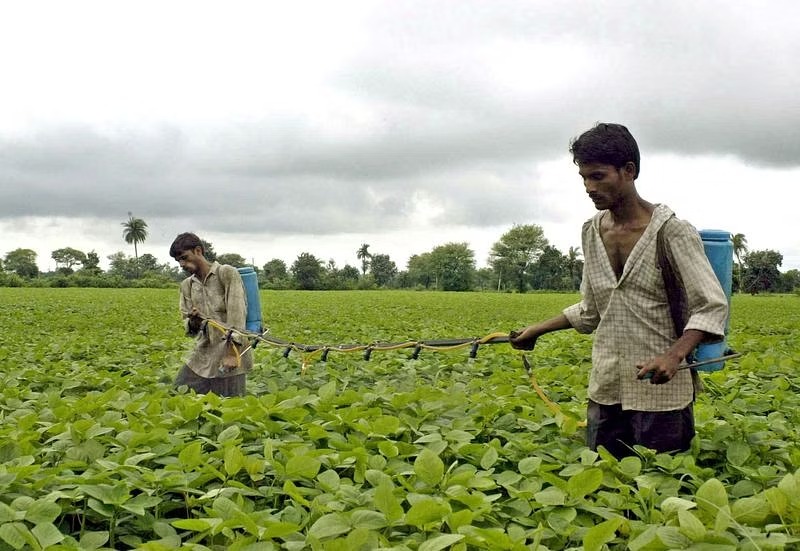A steep rainfall deficit in August may push India’s soybean yields and harvest lower than government’s expectations in marketing year 2023-24 (October-September) despite an increase in acreage, according to market participants polled by S&P Global Commodity Insights.
India’s soybean crop which is the fifth largest in the world is likely to be under pressure due to a slump in soil moisture this year analysts say.
India received its lowest rainfall in over a century in August, with a 36% reduction compared with the usual amount, according to India’s meteorological department data. Normally, August receives the second-highest rainfall of the monsoon months after July.
In May, New Delhi’s third advance estimate of production of oilseeds crops for 2023-24 pegged a record high soybean output of 14.97 million mt, more than 15% higher than its estimates of 12.98 million mt for MY 2022-23.
A fourth and final government estimate of oilseed crops is expected to be released at September-end.

In Madhya Pradesh, the crop has been damaged severely which weighed on both crop yields and quality. Some parts of Maharashtra also may see heat stress on the crop during the final stages of harvest,” an agriculture commodity analyst said.
Madhya Pradesh, followed by Maharashtra are the largest soybean producing states in India and account for about 83% of India’s area under soybean cultivation.
Both states have been classified as “Deficient” in rainfall between June-August quarter — the main monsoon months in India — by the Indian Meteorological Department.
According to the agriculture ministry’s latest crop situation data on Sept. 15, the area under soybean planting was at 12.55 million hectares, up from 12.43 million hectares last year.
However, the crop acreage in Madhya Pradesh dropped to 5.335 million hectares in MY 2023-24 from 5.387 million hectares in MY 2022-23, government data showed.
As per market sources, India’s key soybean producing states saw similar, below-average levels of rainfall in 2017. The country’s soybean production fell by over 20% that year, while crop yields slumped by more than 15%.
El Nino blurs rain forecasts
According to IMD, the month of August, which is a key time for pod development in India’s soybean crop, was the driest and warmest month for the entire country since record-keeping began in 1901.
The all-India rainfall was around 162.7 mm in August which is 36% less than its long period average of 254.9mm. Both average maximum and mean temperatures over the country were at the highest since 1901.
El Nino conditions were very strong which impacted rainfall. Madden Julian Oscillation was also in an unfavorable position,” said M Mohapatra, director general, IMD said in the statement.
Private weather forecaster, Skymet had also forecast a “below normal” rainfall during the monsoon season.
El Nino has a strong influence on the southwest monsoon in India. El Nino years are characterized by an unusual warming of waters in the eastern equatorial Pacific, which has a high correlation with warmer summers and weaker monsoon rains in India.
However, recent rainfall in September over some parts of Madhya Pradesh soybean belt is seen by some traders to salvage late soybean crop varieties in state. The late sown varieties of soybean that mature over 100 days is expected to benefit from rainfall.
“The initial rains in July helped soybean crops but there were no rains in August which caused problems for crop yield in many areas of major producing states. Rains in September has again helped crop as soybean is one the the most tolerant/ stable crop as it can tolerate more heat, rains or drought,” said Rahul Chauhan, director of agricultural commodities research firm IGrain India.
Soybean derivatives trade
Domestic soybean crop output and carryover affects India soybeans derivative supply chain. While the country is one of the biggest soybean oil buyers in the world it also exports soybean meal mainly to Southeast Asia.
According to September data from Soybean Processor Association of India, soybean carryover stocks in 2022-23 stood at 2.51 million mt, up from 180,000 mt last year. The meal export estimates were pegged to jump around 3 times to 1.8 million mt against 0.64 million mt.
Exports of soybean meal derivatives in MY 2022-23 through August stood at 1.74 million mt, with Vietnam being the largest buyer at 505,672 mt so far, followed by Japan, Nepal and Bangladesh.
Moreover, trade body Solvent Extractors’ Association of India (SEA) said in a release on Sept. 14 that India is set to record import of over 16 million-16.5 million mt of vegetable oil during current year.
India’s vegetable oil purchase in August were already up 33% on the year, with soybean oil buying up by over 46% at 357,890 mt.
According to market experts, a lower Indian soybean crop than anticipated would not only hamper meal export from country as other leading global suppliers such as Brazil and Argentina are set for record crop, but it would also inflate the nation’s veg oil import bill.
Read more at-https://shorturl.at/exE19



